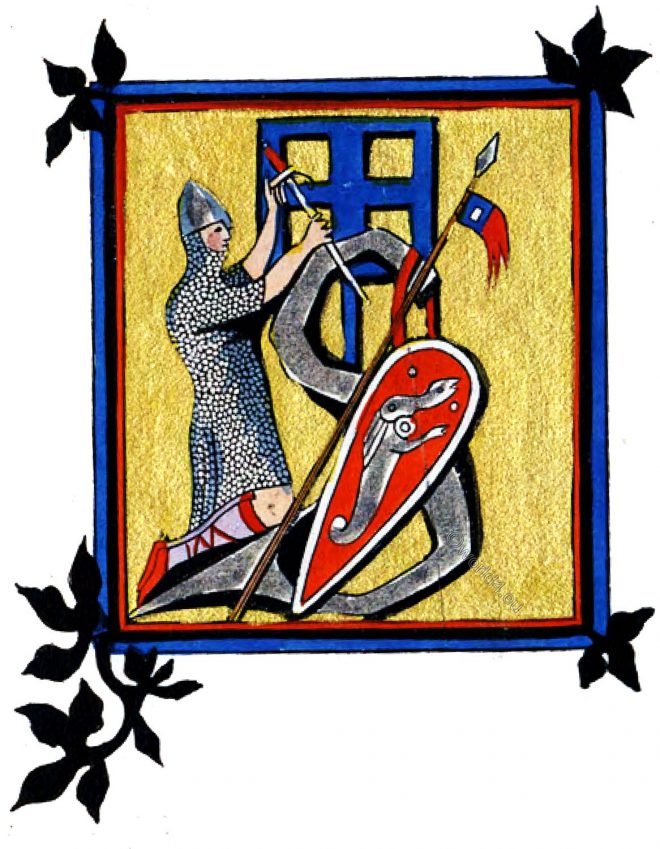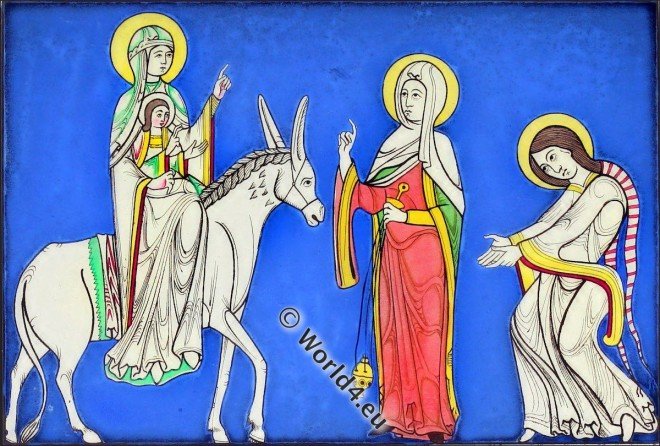Norman shipping 1066. The Commander’s ship, and a horse transport.
Category: Anglo-Norman
Norman knight (Varangian) in chain mail. 11th century.
Varangian reconstructed from the embroideries of the Bayeux Tapestry and contemporaneous original weapons.
The Tower of London, today guard-house for the Crown jewels.
The Bloody Tower and the Wakefield Tower, in which the Crown Jewels are kept.
The armorial bearings of the Monarchs of The Royal House of Normandy.
The Royal House of Normandy. Regal heraldry; the armorial insignia of the Kings and Queens of England. William I, William II, Henry I, Stephen. Queen, Matilda
England Anglo-Norman fashion history, 1087-1100.
Fashion and costume history in the Reign of William II, called William Rufus. Medieval England Anglo-Norman 1087-1100.
The Art of cutting in England. The Norman Period.
The conquest of England by the Normans, under the command of William the Conqueror, effected a most important change in the laws, manners, customs, and costume of the inhabitants.
Norman Fashion Era. England Middle Ages 11th c.
Norman fashion era in England 1066-1087 according to historical sources.
Reign of William I. (The Conquerer) and Matilda of Flanders.
The Norman conquest. A critical inquiry into ancient armour.
The Norman conquest. William the Conqueror. 1066. The state of Armour in Britain when William led his army of Normans.
Ladies fashion of the 12th century. Virgin Mary. Anglo-Norman servants.
These figures present interesting examples of the female costume among our ancestors in the first half of the twelfth century. Illuminations of the Cottonian Manuscript Nero C. IV.
Norman and Anglo-saxon costume period. Medieval England 1066-1154.
The Norman Period. Medieval fashion and costume history of England 1066-1154. William the Conqueror, William II., Henry I., Stephen.










